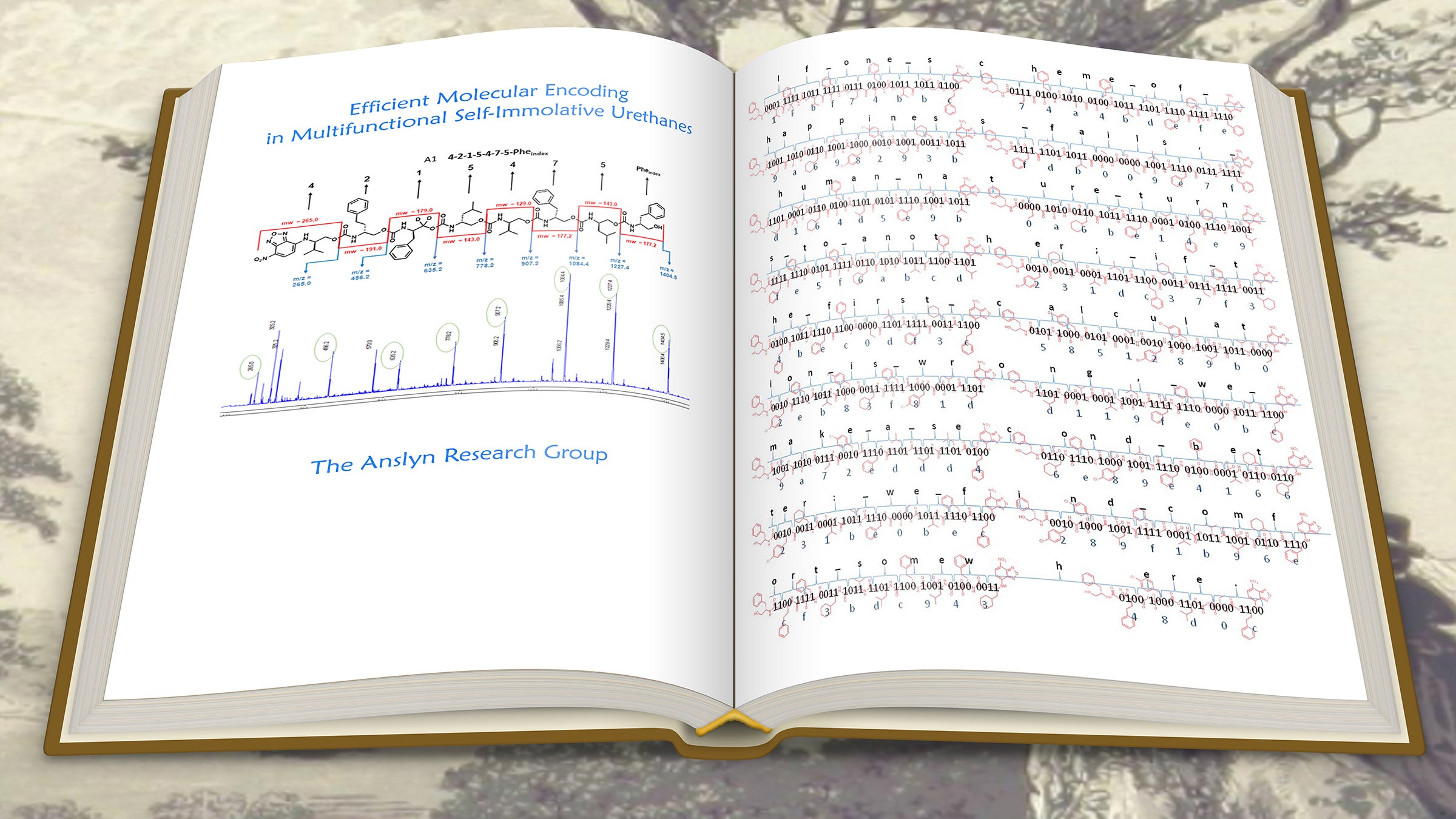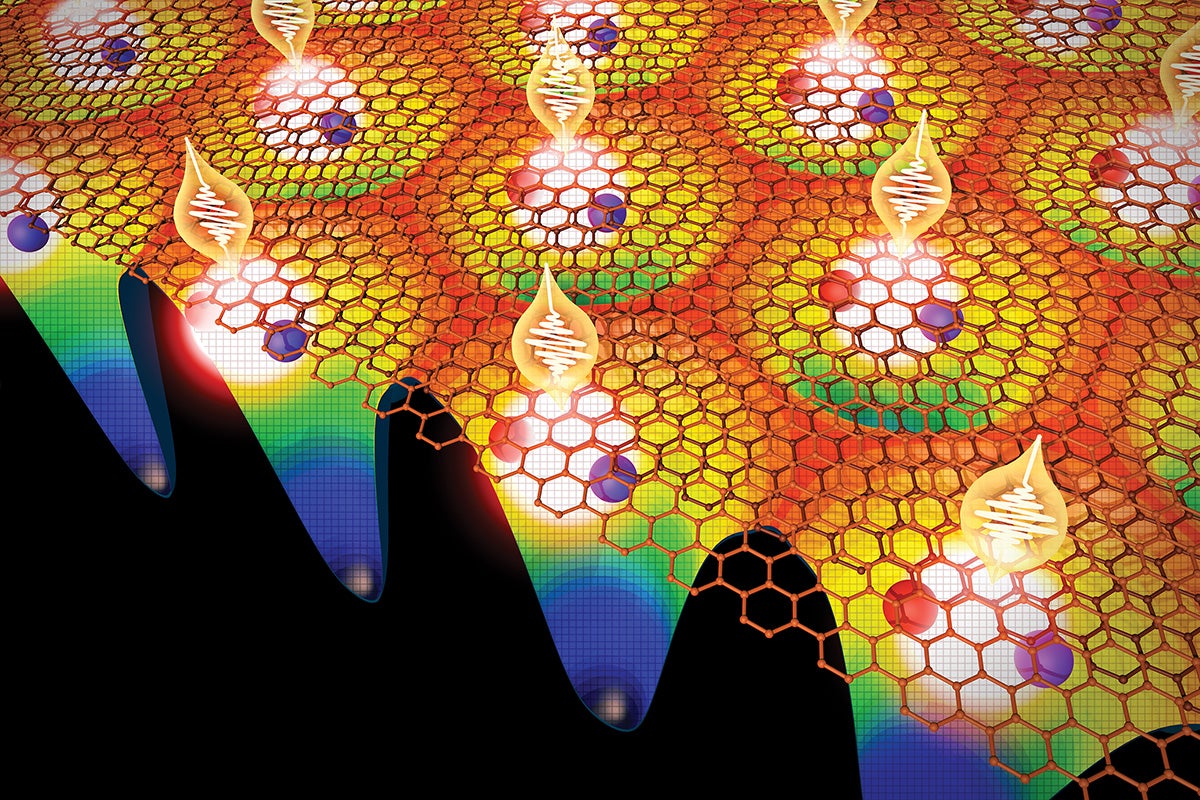UT Chemistry Researchers Encode Jane Austen Quote in a Polymer
The technique, which relies on short polymers called oligourethanes, encodes information with greater density than DNA-based approaches

A quote from Jane Austen’s Mansfield Park written in oligourethanes. Image credit: Sarah Moor.
Using a novel molecular data-storage technique, researchers at The University of Texas at Austin encoded a quote from Jane Austen's Mansfield Park in a series of short polymers, which a third party could read back without prior knowledge of the structures that encoded the passage. Polymers are molecules made of repeating subunits strung together like beads on a string, such as synthetic plastics.
The technique, published April 21 in Cell Reports Physical Science, relies on polymers called oligourethanes, which are highly accessible, and encode information with greater density than DNA-based approaches, which rely on nucleic acids.
"This work is another step toward the long-term goal of using synthetic, sequence-defined polymers for information storage," said Eric Anslyn, a chemistry professor and author of the study. "It sets the stage and hopefully inspires further work towards the practical use of molecules to usefully store information."
As society churns out enormous quantities of data, scientists are continuously seeking dense, durable and cost-effective ways to store information for long-term future use.
"Molecular information storage exists as one attractive alternative to magnetic, optical or solid-state data storage, by offering much higher information density than today's leading silicon-based technologies," said Samuel Dahlhauser, a Ph.D. candidate and the first author.
Anslyn said the work in this area from groups around the world is still at the stage of proof-of-principle. Despite their enormous information-storage potential, polymers such as plastics have lacked sufficiently inexpensive, efficient and large-scale reproducible approaches to "writing" and "reading" information.
To overcome these challenges, Dahlhauser and colleagues encoded a selected passage from Mansfield Park into a series of oligourethanes by using a new technique. The passage reads: "If one scheme of happiness fails, human nature turns to another; if the first calculation is wrong, we make a second better: we find comfort somewhere."
"This particular passage was chosen because we felt it was uplifting in these trying times, and it is easily understood without the context in the book," said Dahlhauser.
The researchers used an algorithm to convert the text into a series of digits, which was then synthesized into 18 oligourethanes, each made of 10 building blocks (monomers). The researchers then decoded the text by sequencing the molecules and employing decoder software to assign the molecules to their corresponding digits. The team reproduced the passage with complete accuracy.
To further verify the technique, the researchers asked a colleague who was unaffiliated with the project to "read" the encoded material by following a set of instructions. They correctly deciphered all but two characters on the first try and, when given a slightly modified set of instructions, correctly deciphered all of the characters.
Anslyn said that while DNA is still a better option for information storage, he predicts synthetic polymers will improve and surpass DNA for this function.
"Synthetic polymers can, and I predict will, ultimately be a better chemical platform for information storage," Anslyn said. "DNA has evolved for biological purposes, not for the purposes of humans' information storage and retrieval. Currently DNA is the media of choice due to the existing biochemical techniques created for its synthesis and sequencing."
This post is based on a press release provided by the journal Cell Reports Physical Science


